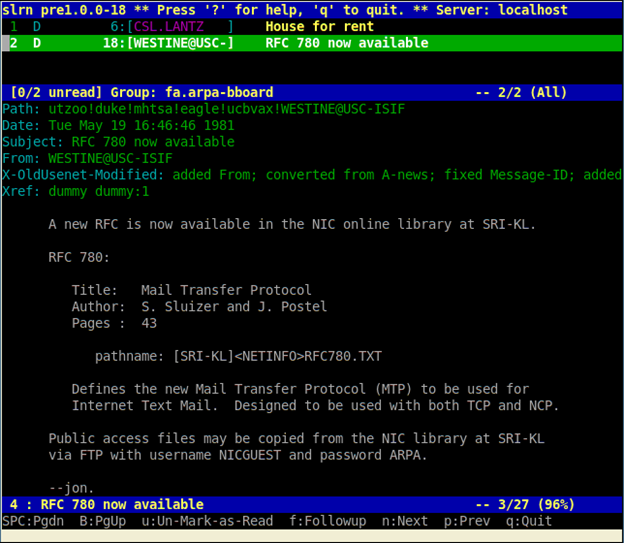DAST vs. penetration testing: Key similarities and differences
Automated vulnerability scanning with DAST tools and manual penetration testing are two distinct approaches to application security testing. Though the two are closely related and sometimes overlap, they differ (among other things) in scope, efficiency, and the types of security vulnerabilities found.
Your Information will be kept private.
Begin your DAST-first AppSec journey today.
Request a demo
Understanding DAST and pen testing
It can be tempting to fall into checklist mode in cybersecurity, if only for the peace of mind of ticking off the required compliance items. For web application security, some organizations still treat their periodic penetration test or vulnerability assessment as a formality to tick their “application security testing” box, which will never be enough to effectively manage security risk. Ideally, you need a continuous testing process that’s part of your wider security program—but can penetration testing provide the required coverage? And what about DAST and all the other automated testing methods out there?
This post goes into the key similarities and differences between automated and manual approaches to dynamic application security testing (DAST) and shows that it should never be an either-or choice between pentesting and DAST.
Technically speaking, any method of security testing that probes a running app from the outside (black-box testing) qualifies as DAST, whether manual or automated. However, in common use, the term DAST usually refers to automated vulnerability scanning, while manual dynamic security testing is called penetration testing.
Similarities between DAST and penetration testing
At a high level, manual penetration testing and automated scanning with DAST tools are intended to achieve the same fundamental goal: find and report security vulnerabilities in the applications under test. The similarities encompass both the general methodology and the goals of both approaches:
- Identifying security weaknesses: Application vulnerability scanning and penetration testing both focus on detecting security vulnerabilities in web applications and systems. They achieve this by actively probing applications for security flaws, including misconfigurations, weak authentication, and exploitable vulnerabilities.
- Black-box testing approach: Both automated DAST and penetration testing are black-box testing methods, meaning they assess security from the outside by probing a running application without needing source code access. This outside-in approach is technology-agnostic to test everything that is running for a realistic view of the overall security posture.
- Real-world attack simulation: When testing running apps, DAST tools and pentesters alike use techniques that mimic real cyberattacks, such as SQL injection, cross-site scripting (XSS), and authentication bypass attacks. This gives the most accurate picture of the current exposure and security risk in the face of real-life cyber threats.
- Security prioritization and remediation guidance: The outputs of both methods are vulnerability reports categorized by severity and potential impact. Leading DAST tools can match penetration testers in the confidence level that a reported issue is remotely exploitable, helping security teams prioritize remediation based on immediate risk.
- Risk management and compliance requirements: Application security testing is often a compliance requirement to meet regulatory or industry standards, with both automated DAST and penetration testing playing a crucial role in meeting those requirements. In practice, most organizations will employ a combination of both methods.
Differences between DAST and penetration testing
Some kind of vulnerability scanner is an essential part of any pentester’s toolkit, helping to map out the application environment and find likely weak spots for further manual investigation. However, fully automated and integrated DAST differs from pentesting in several fundamental ways:
- Security testing coverage: Pentesters are limited by time and assignment scope, often focusing on business-critical or recently changed applications. A good quality DAST solution, on the other hand, can scan entire web environments automatically and repeatedly, covering not only first-party code but also vulnerabilities in third-party libraries, APIs, and runtime configurations, even if these change frequently.
- Speed and cost: As a manual process, penetration testing is slow and expensive, requiring advance planning and budgeting and potentially leaving security gaps in between assessments. Automated DAST tools can, once set up, run any number of automated scans at any time with no additional cost, making them ideal for continuous security in DevSecOps environments, where stopping a sprint to wait for pentest results is impractical.
- Depth and breadth of testing: The goal of penetration testing is in the name: to see if defenses can be penetrated and the organization breached. Accordingly, a pentester may only report a few instances of a recurring vulnerability and leave your teams to identify and fix similar cases. Automated DAST scanning, in contrast, provides more comprehensive coverage by running hundreds of automated security checks per asset at scale. With a good quality tool, you can establish and maintain a security baseline between in-depth manual testing commissions.
- Ease of remediation: Pentest reports may point out security risks but typically lack guidance on fixing vulnerabilities, leaving security teams and developers to work out remediation methods on their own. Advanced DAST tools are designed to integrate directly into CI/CD pipelines and issue trackers, providing developers with accurate vulnerability reports complete with remediation guidance. Invicti specifically uses proof-based scanning to cut down on false positives and ensure only actionable security issues reach developers.
- Types of vulnerabilities found: Both approaches can detect common security flaws like SQL injection and XSS, but pentesters are best employed chaining exploits to simulate real-world attack scenarios and identifying business logic vulnerabilities. A good DAST tool should catch the vast majority of “easy” vulnerabilities for you to find and fix in-house, letting security professionals focus on higher-value flaws.
When to choose DAST
Automated vulnerability scanning with DAST is essential for continuous and scalable security testing across entire application environments. Unlike penetration testing, which is time-consuming and often limited in scope, DAST can rapidly scan multiple websites, applications, and APIs for a wide variety of common vulnerabilities. This makes it especially valuable in DevSecOps workflows, where frequent security testing lets teams catch and fix security issues early without slowing down development—and do it in-house without waiting for external processes.
Uniquely among application security testing methods, DAST can be used both in AppSec and in InfoSec, enabling scheduled, automated scans that detect vulnerabilities as applications evolve from development through to production deployments. When integrated with CI/CD pipelines, especially in combination with static application security testing (SAST) tools, DAST helps enforce security hygiene throughout the software development lifecycle (SDLC) and minimizes the risk of vulnerabilities making it into production. When used for operational security, the same DAST gives security teams a real-time, fact-based view of the security posture of their entire organization.
When to choose penetration testing
Manual penetration testing gives you a point-in-time assessment of your resilience in the face of a determined attacker. Depending on the defined scope, pentesters will often look not only for application vulnerabilities but for exploitable security issues overall, spanning multiple areas of security and types of attacks if needed. Unlike automated tools, pentesters can adapt their methods during the assignment to chain together multiple smaller weaknesses or discover and exploit business logic vulnerabilities such as broken authentication flows or privilege escalation bugs.
Pentesting is also needed for high-stakes security assessments, such as regulatory audits, red team exercises, or testing critical applications that store sensitive data. In cases where applications rely heavily on custom authentication mechanisms, non-standard APIs, or complex integrations, manual testing ensures a thorough evaluation of security risks. While DAST excels at frequent and scalable vulnerability detection, penetration testing works best for deep, targeted assessments that require human expertise.
Examples of DAST and penetration testing tools
Web vulnerability scanners are by far the most popular type of DAST tool. Every DAST tool has a vulnerability scanning engine, but different products vary widely in terms of capabilities and additional functionality—not to mention the quality of the scan engine itself. At one end of the spectrum, you have basic vulnerability scanners that only run a scan using an open-source engine and return results. At the other end are full-featured DAST-based platforms such as that offered by Invicti, where a proprietary scan engine is the heart of a comprehensive AppSec solution that covers multiple pre-scan and post-scan steps as well as integrating with other automated testing tools and external workflows.
Penetration testing, on the other hand, relies on both automated and manual techniques to simulate real-world attacks. Web application pentesting often starts by running a pentesting vulnerability scanner and then uses a variety of manual tools to investigate potential vulnerabilities in more depth and escalate access whenever possible. Penetration testers can also use specialized tools for network reconnaissance, password cracking, traffic analysis, fuzzing, exploit development, and more to get a more realistic picture of an organization’s exposure to security threats.
Keeping your web apps and APIs secure goes beyond DAST vs. penetration testing
Application security testing has gone from a just-in-case proposition to a non-negotiable requirement. As application architectures and deployment modes get ever more distributed and complex, it’s no longer enough to rely only on perimeter defenses like web application firewalls—first and foremost, the underlying application itself needs to be secure. Any AppSec program worth its salt should incorporate a layered and comprehensive approach to security testing, using the right testing methods at the right time to minimize the number of application vulnerabilities at every stage of development and operations.
In an industry swimming with acronyms, an advanced DAST-first platform offers the unique ability to unify and fact-check multiple testing tools while covering both information security (to scan your organization’s own attack surface) and application security (to test the apps you’re developing and running). Combined with the scalability and tech-agnostic nature of automated vulnerability scanning, this makes DAST foundational to any cybersecurity program. Use dynamic application security testing to bring security testing in-house and fix everything you can, and only then call in the security experts and ethical hackers as part of a penetration test or bug bounty program.
Final thoughts
Remember the MOVEit Transfer crisis? (If not, we’ve covered it here and here.) The resulting attacks that ultimately affected hundreds of organizations were only possible because malicious hackers combined several simple and normally inaccessible vulnerabilities into a devastating attack chain. Just like a penetration tester, the attackers used their human ingenuity to devise an attack path—but if those basic vulnerabilities had been found by automated scanning at earlier stages of the development process, all those MOVEit Transfer data breaches might not have happened.






